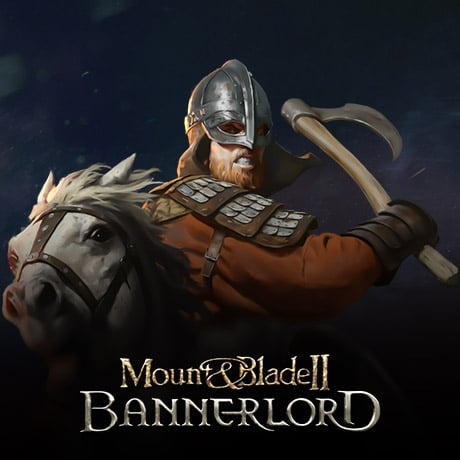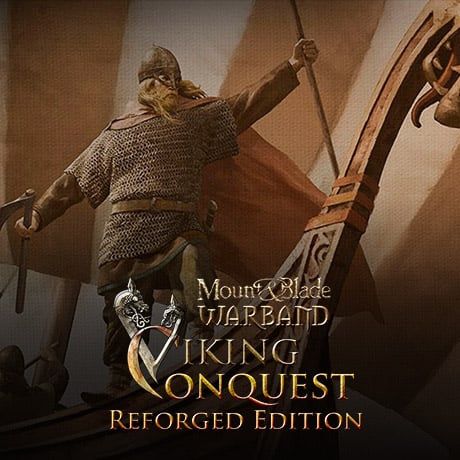five bucks
Knight at Arms

Yep, it was definitely not very common to have super-long pikes in the early medieval period. However the Byzantines did certainly have the menavlatoi, who were trained to brace an extra-thicc, reasonably long spear in the ground to resist a cavalry charge. In Bannerlord for some weird reason this has turned into a short glaive.No objections. The problem is that professionals with long pikes were probably the least numerous type of professional medieval infantry. Only the Scottish and other native tribes of Britain come to my mind.
I have a reply to Vonbalt's Hastings statements further up in this thread.(all posts about Battle of Hastings)
In that first battle outside the walls of Dorostolon, where the Russian force was presumably larger (given the casualties you will see later), the Russians held firmly against the Byzantine infantry, but definitely did not hold firm against the cataphracts. The cataphracts charged only once, breaking the shieldwall, crushing the Russians "within minutes", routing them, inflicting serious casualties, and forcing them to retreat into the castle.From what I've read about the battle, Russians stead firmly (spears+shield wall) and inflicted heavy casualties on both Byzantine infantry and cataphracts. Both sides used to gain the upper hand and had to retreat several times. Constant skirmishes and clashes (as this was a siege) eventually depleted human resources of both armies and the parties had to start peace negotiations. So, technically, that was a draw.
Later on that year, they faced for a second battle, again the Russians formed a solid shieldwall, and Sviatoslav placed his army in very favourable narrow terrain which removed the Byzantines' numerical advantage, and were using archers behind the shieldwall to whittle down the cavalry (not heavy infantry, therefore irrelevant to the argument). The Byzantines thus decided to retreat in orderly fashion to gain more favourable terrain. Following this, John Tzimiskes rode with his cataphracts directly into the center of the Russian shieldwall, and the heavy cavalry rolled over it, causing heavy casualties. This second battle ended with 350 Byzantine deaths, and 15,000 Russians killed or captured.
It was a decisive victory, definitely not a draw; Sviatoslav sued for peace shortly after and promised to leave the Balkans in Byzantine hands, and all they gave him in return was food and safe passage home.
You're reading about the first battle of Dyrrhachium (1081), not the second battle I'm talking about (1109). The wikipedia article for the first battle is misleading because it doesn't provide enough detail; I'm drawing from "The campaigns of the Norman Dukes of Southern Italy and Sicily to Byzantium, in the years between 1071-1108 A.D.", a PhD piece by Georgios Theotokis, and also a primary source of the Byzantine Anna Komnene's writings, which combined, provide much better detail. The Varangians, who in this instance were Anglo-Saxons (rather than Norse), were using shields and not two-handed weapons in this instance (as opposed to usual practice); another detail the wikipedia article is lacking is that the Varangians routed Normans who were a poorly disciplined mixture of light cavalry and light infantry. Not heavy cavalry, as is under discussion. And when they were attacked by the Varangians, they were busy fighting other enemies at the time, as opposed to charging the Varangians. It is definitely true the Varangians were here defeated by infantry, but that's neither here nor there for the purposes of a discussion about cavalry vs infantry.Hmmm, funny thing. The wikipedia article states that in this battle Varangian detachments (traditionally armed with two-handed weapons) managed to rout Norman cavalry (in the open field!!!), but were eventually cut off from their main forces and destroyed by Norman infantry.
Dyrrhachium (1109) I picked as an example because the Byzantine cavalry charge broke the Norman shielded infantry's center during the battle. It wasn't a large battle- the combatants numbered in hundreds- which is why it doesn't have its own Wikipedia article.
Agreed, but we have to make do.Well, real life does't work like games work. We can't say that non-polearm heavy infantry has no chances against heavy cavalry. Because medieval footmen were well aware of their own strengths and weaknesses. Many means of countering enemy cavalry were at their disposal - loose formations, stakes, wolf pits, forests, hills and rocks and etc. Unfortunately, games do not give us the tactical depth of the real world, and usually all we can have is rock-paper-scissors "balance" - spearmen beat cavalry, cavalry beats swordsmen, swordsmen beat spearmen... And that sucks...
Oh, I know, but you did say 10 men. Let's say you have 100 infantry, your enemy has 90 infantry and 10 cavalry, and you put your infantry in a 10-man file as you said in order to deal with the cavalry charge. This is great, but now your opponent can easily encircle your square. So you wouldn't always go super deep unless you were only facing cavalry is what I'm trying to say. In combined arms battles it would be safer to go wide and seemed to be fairly standard practice.When I said "deep formation" I didn't mean COLUMN of course, but not a "thin red line" either.
Just a heads up to your last two posts, not meaning to be rude but for future reference: the moderators get annoyed if you make multiple posts in a row without anyone between, so try and keep everything in the same post.








